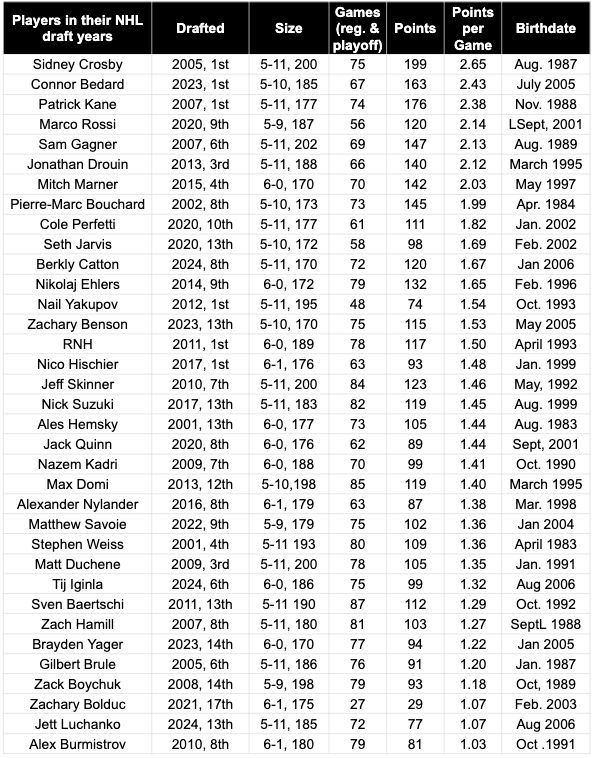The main trade acquisition of the Edmonton Oilers this summer was Matthew Savoie, the ninth overall pick in the 2022 draft.
That’s solid draft pedigree, correct? Cause for hope, yes?
Savoie is a top-scoring major junior player with excellent offensive skills. He’s just the kind of forward that a certain kind of skill-loving fan cherishes above all other kinds of prospects.
Some fans are over the moon about the trade for Savoie, so much so that I’ve often heard comparisons of Savoie to Brayden Point and Jordan Eberle, to other small forwards but highly-skilled from the Western Hockey League who have gone on to have major success in the NHL.
As much as I like this trade myself, I don’t profess to be any kind of expert on Savoie’s game, not having put in the hours it would take watching this player to get a good sense of the pros and cons of his play.
But I have to admit, though, I’m skeptical of the Point and Eberle comparisons, not because there’s no chance that Savoie might reach the NHL heights of those players, but because those two comparisons seem like cherry-picking.
I mean, why compare Savoie to those two players and not to the numerous smaller but high-scoring major junior forwards out of the WHL who have failed to make it big in the NHL? There is no shortage of them. They greatly outnumber players like Eberle and Point who rose to the top of the NHL.
Hockey is a steep pyramid covered in slippery elbow grease and tears of frustration. It’s near impossible to climb. Some excellent players make it, but they’re the exception, even among the ranks of elite major junior players.
To get a better sense of comparable players to Savoie, I went looked back at all forwards drafted in the Top 15 in the NHL out of major junior hockey this century, then focused on the forwards who were either both 6-feet or under and weighed less than 200 pounds, or were under 6-feet.
There are 35 such forwards, the best of them being Sidney Crosby, Patrick Kane and Connor Bedard. I don’t think Crosby belongs on this list because he plays a power forward game, but he’s 5-11 so he fit the criteria.
Of the 35, about half of them had extended careers in the NHL as Top 6 forwards, one of the six forwards on the top two lines of their respective teams. It’s tempting to say that this type of forwards has a 50/50 shot of being a Top 6 forward in the NHL, but it’s not quite that simple.
When you look at their points-per-game in major junior in their respective draft years, it’s evident that the more points a player put up, the better his chances of becoming a top NHLer were.
Savoie had 102 points in his 75 regular season and playoff games in his draft year, good for 1.36 points per game, 24 out of 35 on the list.
But of the 11 players ranked below Savoie, only two of them, Matt Duchene and Stephen Weiss, became Top 6 forwards in the NHL, though it’s still too early to tell with Tij Iginla, Jett Luchanko, Zach Bolduc, and Brayden Yager, all drafted in recent seasons, just like Savoie.
They will be the author of their own futures.
Perhaps Savoie will rise up like Duchene and Weiss did. Or maybe he’ll fade like Sven Baertschi, Zach Hamill, Gilbert Brule, Zack Boychuk, and Alex Burmistrov.
Players just ahead of Savoie when it comes to scoring include Max Domi, Jack Quinn, Ales Hemsky, Nick Suzuki and Jeff Skinner. Maybe Savoie will figure out the NHL game just as those players did.
But we shall see. Savoie will speak with his game, telling us where he belongs. For now, though, maybe take the Jordan Eberle and Brayden Point comps with a grain of salt, no?
Savoie has a chance to be a Top 6 NHLer, and we’ll know soon if he’s got the right stuff, but there are rarely sure things in any NHL draft, and for all his obvious promise Savoie is not in that rarest of categories.
